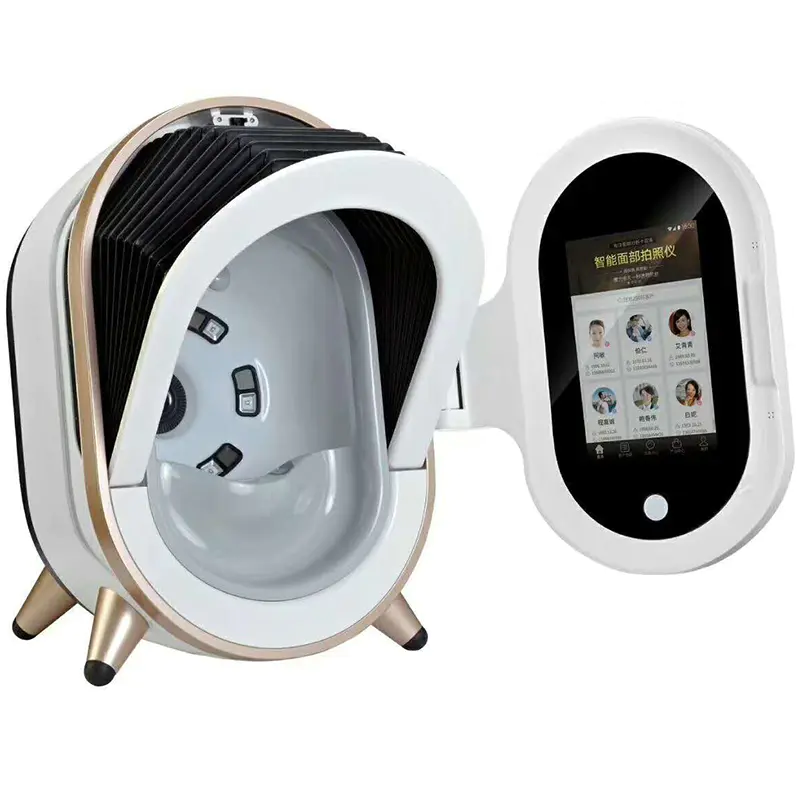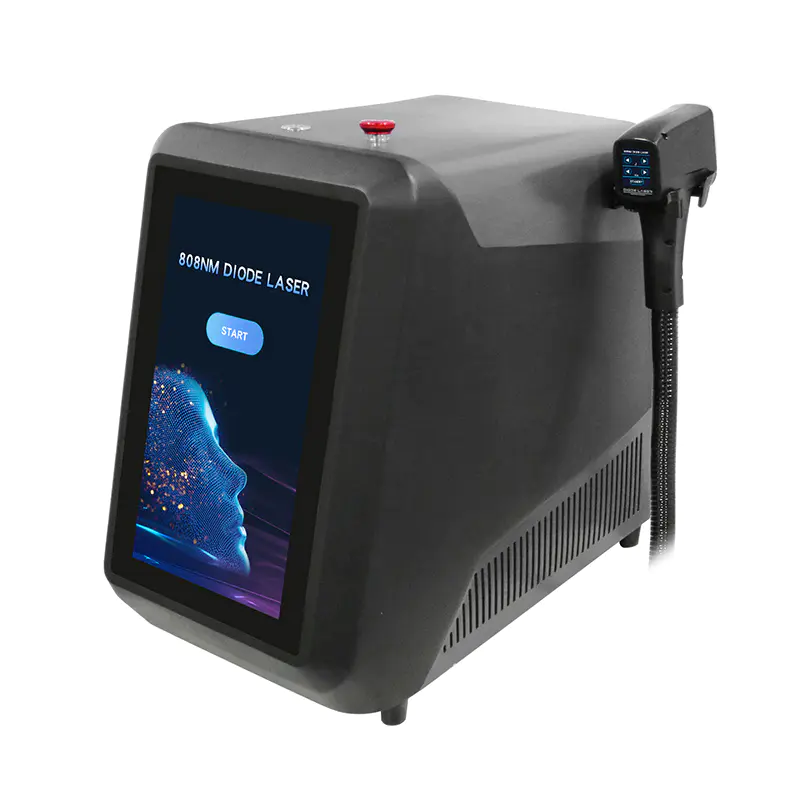Common Issues Encountered with the Best Cryolipolysis Machines: A Comprehensive Guide
In the ever-evolving landscape of cosmetic procedures, the Cryolipolysis Machine has emerged as a frontrunner for non-invasive fat reduction. As we venture towards 2025, understanding the technology trends is essential for both practitioners and patients alike. This comprehensive guide will delve into the common issues encountered with these advanced machines, ensuring users can maximize their effectiveness while minimizing potential complications. As the demand for body contouring solutions continues to rise, being informed about the operational nuances and challenges associated with Cryolipolysis Machines is crucial. This guide aims to equip readers with the knowledge needed to navigate this innovative field, enhancing their proficiency and confidence in employing these cutting-edge technologies for optimal results.

Common Technical Malfunctions in Cryolipolysis Machines: What to Watch For
Cryolipolysis machines have revolutionized the body contouring industry, but like any sophisticated technology, they can be prone to malfunctions that practitioners must be aware of. One common issue encountered is inconsistent cooling temperature, which can lead to ineffective fat reduction and suboptimal patient results. According to a report by the American Society of Plastic Surgeons, improper temperature settings can not only diminish the efficacy of the treatment but also increase the risk of adverse effects, such as frostbite or discomfort.
Another significant concern is software glitches that can disrupt the operation of the machines. Issues such as unresponsive touchscreens or erratic treatment cycles can significantly impede a facility's ability to provide reliable services. A study published in the Journal of Aesthetic Medicine notes that such technical malfunctions not only affect patient safety but can also lead to increased downtime and associated financial losses. Regular maintenance and timely software updates are essential to minimizing these risks and ensuring optimal machine performance, contributing to a better patient experience and more successful outcomes.
Client Safety Concerns with Cryolipolysis Treatments: A Guide for Practitioners
Client safety is paramount when it comes to cryolipolysis treatments, and practitioners must be well-versed in the potential risks associated with this popular fat-reduction procedure. One of the primary concerns is skin reaction, which can manifest as bruising, redness, or in rare cases, severe frostbite. Practitioners should conduct a thorough assessment of each client’s medical history and skin type prior to treatment to minimize these risks. Proper training in machine operation and adherence to the manufacturer’s guidelines is essential to ensure safety during the procedure.
Moreover, understanding client expectations is crucial. Practitioners should clearly communicate what clients can realistically expect from cryolipolysis results and the necessary aftercare. Addressing concerns such as pain, discomfort, or the duration of side effects will help build trust and ensure a positive treatment experience. By fostering an open dialogue, practitioners can not only alleviate client fears but also enhance satisfaction with the outcome of their treatment. Taking these proactive steps will contribute to a safer environment for clients and a more successful practice overall.
Understanding the Limitations of Cryolipolysis: When It May Not Work
Cryolipolysis, widely known for its non-invasive fat reduction capabilities, has become a popular choice for those seeking to enhance their body contours. However, it is essential to recognize the limitations of this treatment. Not every individual is a suitable candidate; for example, those with certain medical conditions or unrealistic expectations may not experience the desired results. Factors such as body composition, skin laxity, and fat distribution play a crucial role in determining the effectiveness of the procedure.
Moreover, while cryolipolysis can effectively target localized fat pockets, it is not a weight-loss solution. Individuals seeking substantial weight loss will likely be disappointed, as this method works best in conjunction with a healthy lifestyle that includes diet and exercise. Additionally, some may experience temporary side effects, such as redness or sensitivity in the treated areas, which could deter people from undergoing the procedure. Thus, understanding these limitations is vital for anyone considering cryolipolysis, ensuring they have realistic expectations and appreciate the nuances of this fat reduction technique.
Common Issues Encountered with Cryolipolysis Machines
Essential Maintenance Tips for Longevity of Cryolipolysis Equipment
Ensuring the longevity of cryolipolysis equipment is crucial for both effective treatment outcomes and financial performance. According to the Global Cryolipolysis Equipment Market Report, the industry is projected to grow at a CAGR of 9.5% from 2021 to 2028, highlighting the increasing reliance on these machines in aesthetic practices. To maximize the lifespan and effectiveness of cryolipolysis machines, proper maintenance is essential. Regularly cleaning the applicators and ensuring the cooling systems are functioning optimally can prevent costly repairs and downtime.
Moreover, professional servicing is recommended every six months to calibrate the equipment and replace any worn parts. This proactive approach not only enhances the performance but also ensures compliance with safety regulations, which is pertinent given that a report from the Aesthetic Society indicates that over 22% of practices have faced issues with equipment failure due to inadequate maintenance. By implementing a structured maintenance schedule and investing in proper training for staff on the correct usage, clinics can significantly reduce the risk of malfunctions and extend the operational life of their cryolipolysis machines.
Evaluating Efficacy: Recognizing Inconsistent Results in Cryolipolysis Procedures
When it comes to cryolipolysis procedures, one of the most significant challenges practitioners face is the inconsistency in results. While this non-invasive fat reduction technique is widely celebrated for its effectiveness, patients often report varying degrees of success. These discrepancies can be attributed to multiple factors, including individual metabolic rates, the specific cryolipolysis machine used, and the technician's expertise. Therefore, understanding these variables is essential for both practitioners and patients to set realistic expectations.
Moreover, the selection of the cryolipolysis machine plays a crucial role in achieving consistent outcomes. Not all machines are created equal; differences in design, technology, and treatment protocols can lead to divergent results. For instance, advanced devices may offer tailored treatment settings that cater to specific body areas or fat types, improving efficacy. Additionally, rigorous training and certification for technicians ensure that the procedure is performed correctly, minimizing the risk of suboptimal results. By carefully evaluating equipment choices and technician qualifications, both practitioners and clients can enhance the likelihood of satisfactory treatment outcomes in cryolipolysis procedures.
News
- What Can A Professional Skin Care Analyzer Do For Facial Treatment?2025/03/18
Facial treatment (using skincare products or various machines) has been very popular. What can a professional skin care analyzer do for facial treatment?
- What Are Upper Lip Hair Removal Machine Side Effects And How to Avoid?2025/03/13
Lip hairs are very unsightly, especially for female. Other traditional hair removal methods (such as shaving and depilatory creams) unluckily cause more hair.
Products
Inquiry For Price List
For inquiries about laser hair removal, hifu machine, cryolipolysis machine or price list, please leave your email to us and we will be in touch within 24 hours.
Contact Us
- Fanghu West 2nd Road, Huli District, Xiamen City, Fujian Province, China
- sale@bitasbeauty.com























